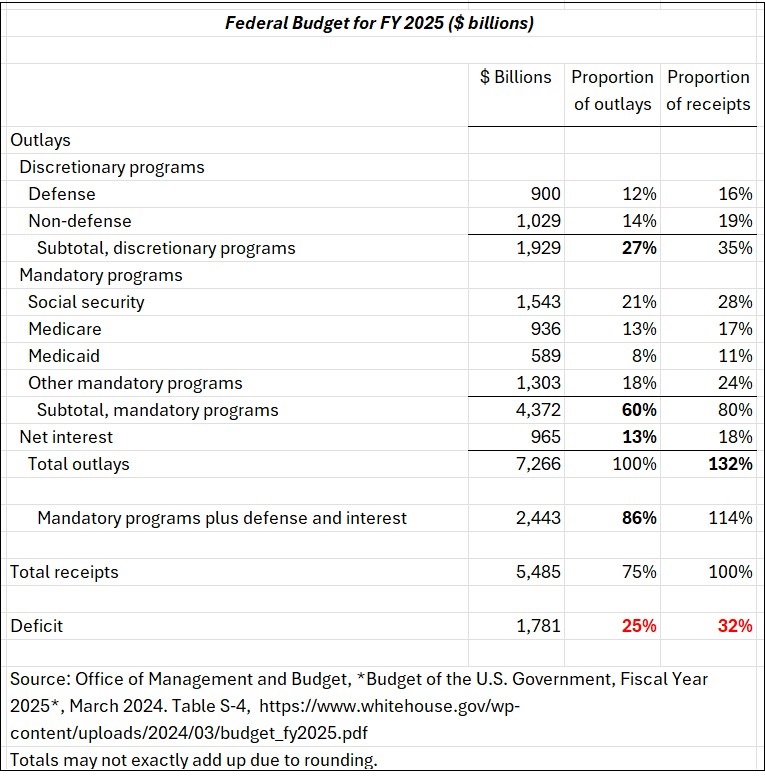Many people, The rationally ignorant voterWe cannot ignore the poor financial situation of the United States. The table below shows: The last budget of the US governmentPoliticians should be aware of this problem, but their self-interest is to postpone the future and compete for the privilege of power by promising voters new programs, benefits and tax cuts (see James Buchanan and Richard Wagner, 1977). Democracy in the Deficit: The Political Legacy of Lord Keynes).
If Congress continues to spend as planned in the March 2024 budget, spending (expenses) for fiscal year 2025 (October 1, 2024 to September 30, 2025) will reach $7.3 trillion against projected revenues (revenues) of $5.5 trillion. This will result in a deficit of $1.8 trillion. If that happens, the federal deficit next year will be 25% spending and 32% revenues (the red lines in my table).
Annual deficits at this level have become fairly common: Federal spending hit $1 trillion in 2019, peaked at $3.1 trillion in 2020, and has since declined since the pandemic to an average of $1.9 trillion from 2021 to 2024.
This problem is not caused by annual emergencies, enthusiasm, or random “government waste.” 60% of federal spending is Required“Other” is a category that primarily consists of income programs such as unemployment benefits, nutrition assistance programs, and Supplemental Security Income.
Part of the federal government’s spending Discretionary (27% of spending) includes $900 billion for defense and annual appropriations by Congress for all other purposes.
To these two broad spending categories would need to be added roughly $1 trillion (13% of spending) for interest payments on the bond. Interest payments fall when interest rates fall but increase when debt levels increase.
Mandatory programs, plus defense spending and bond interest (which are also not easily compressible), amount to 86% of total spending. Thus, only 14% of federal spending is compressible, or “discretionary” in this sense. To eliminate the annual deficit without raising taxes, we would need to eliminate all of these “discretionary” spending, plus cut “irreducible” spending (mandatory programs, defense spending, and bond interest) by an additional 11%.
Since 1961, OMB’s past budget table (see Table 7.1) The only two years the federal budget has had a surplus are 1969 and another five-year period from 1998 to 2001. The problem certainly does not depend on which party is in power. Chronic deficits have projected the national federal debt to reach $30 trillion by the end of fiscal year 2025, more than double the $14.2 trillion at the end of President Barack Obama’s second term.
The public debt is a time bomb that will explode if not defused. A fundamental reassessment of the functions and scope of the federal government is required to avoid massive increases in taxes and/or default on the public debt.

*******************************************

Government debt is rising







